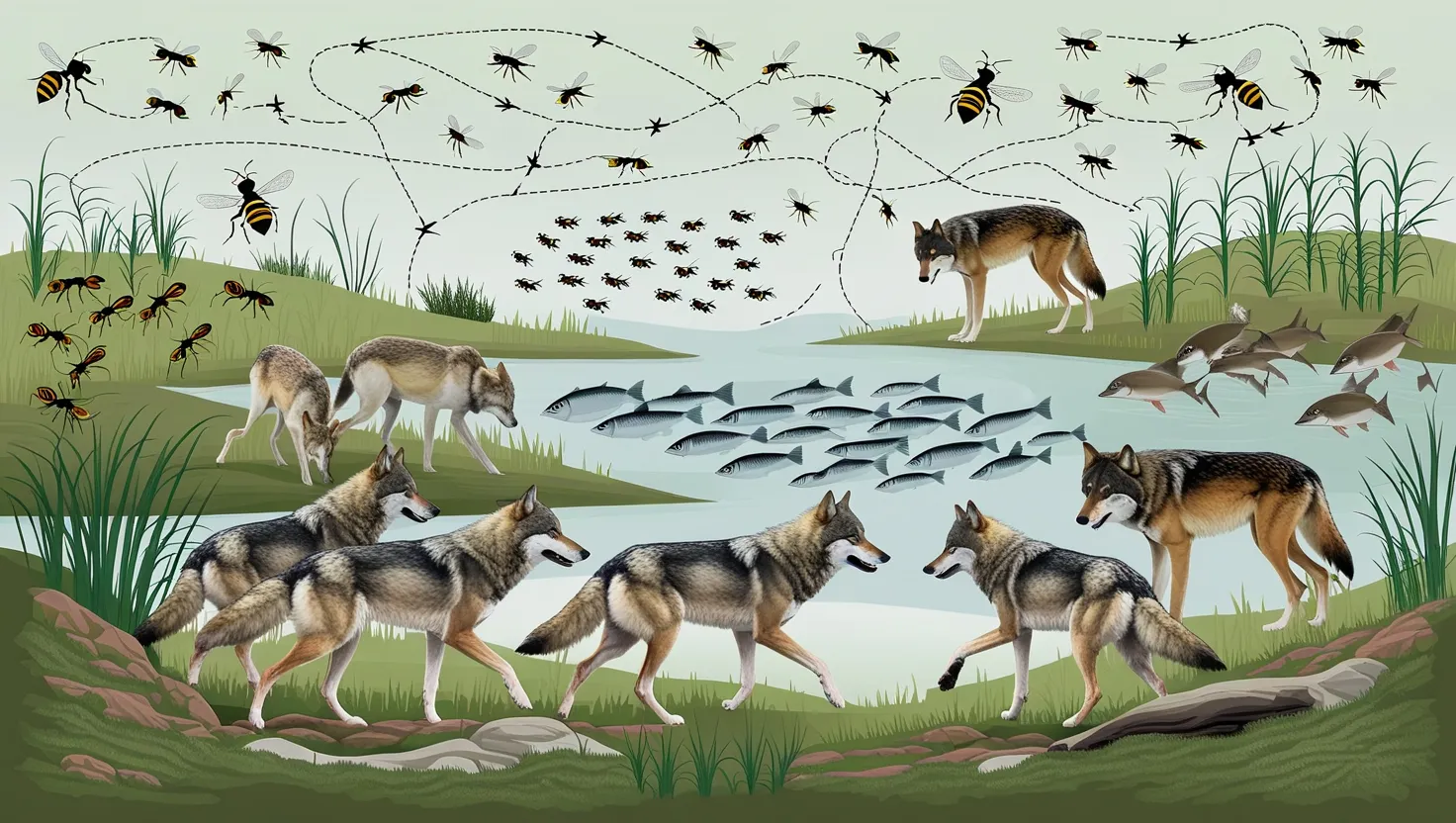In the vast and intricate web of life, there are countless examples of how collective intelligence shapes the behaviors and survival strategies of various species. As we delve into these natural wonders, we find ourselves not just marveling at the complexity, but also drawing valuable lessons that can be applied to our own world.
Let’s start with one of the most fascinating examples: ant colony optimization. Imagine a bustling city, but instead of humans, it’s ants that are the architects and engineers. Ants lay down pheromone trails that guide their fellow workers towards food sources or back to the colony. This simple yet effective communication system allows the colony to optimize paths, ensuring that the shortest and most efficient routes are used. As the number of ants following a path increases, the pheromone trail strengthens, guiding more ants to follow. This natural algorithm has inspired computer scientists to develop ant colony optimization algorithms, which are used to solve complex problems like the traveling salesman problem.
“As the ant walks, it deposits pheromone on the ground, and this pheromone trail serves as a signal to other ants, helping them to decide which path to take,” notes a researcher who has studied these behaviors extensively. This concept is eerily similar to how we use data and feedback loops in our own systems to optimize performance.
Moving from the ground to the air, we find another remarkable example in bee swarm decision-making. When a bee colony needs to relocate, it’s not just a matter of following a leader; it’s a collective decision made through a complex dance. Scout bees explore potential nest sites and return to the swarm to perform a waggle dance, which communicates the direction and distance of the site. The more vigorous the dance, the more attractive the site. This process continues until a consensus is reached, and the entire swarm moves to the new location. This democratic process is a testament to the power of collective decision-making, where no single individual dictates the outcome.
“Bees are able to make decisions that are better than any individual bee could make on its own,” observes Dr. Couzin, a leading expert in collective behavior. “This is a powerful lesson for us in how to make group decisions effectively.”
Underwater, we find another stunning display of collective intelligence in fish schooling behaviors. Schools of fish move in synchronized patterns, creating a mesmerizing display of coordination. But this is not just for show; it’s a survival strategy. By moving together, fish confuse predators and increase their chances of survival. Each fish follows simple rules: stay close to your neighbors, avoid collisions, and move in the same direction. These local interactions result in a complex and adaptive behavior that benefits the entire school.
How do these simple rules lead to such complex behaviors? It’s a question that has puzzled scientists for decades, but the answer lies in the beauty of simplicity. When individual fish follow basic rules, the collective outcome is far more sophisticated than anything an individual could achieve alone.
On the forest floor, a less glamorous but equally fascinating example can be found in slime mold problem-solving. Slime molds are single-celled organisms that, when faced with a problem like finding food in a maze, can solve it collectively. They spread out, explore different paths, and eventually converge on the most efficient route. This process is not driven by a central brain but by the interactions of individual cells. It’s a reminder that intelligence doesn’t always require a complex nervous system.
“Slime molds can solve mazes and find the shortest path to food, all without a brain,” says a biologist who has studied these organisms. “It’s a humbling reminder of how simple rules can lead to complex behaviors.”
Termite mounds are another marvel of collective intelligence. These intricate structures are built by termites following simple rules about the type of soil they encounter and the pheromone signals they receive. The result is a complex architecture that regulates temperature and humidity, creating an ideal environment for the colony. Each termite contributes to the construction without a master plan, yet the final product is a testament to their collective ingenuity.
“Termites build complex mounds without any single termite having a blueprint,” notes an entomologist. “It’s a remarkable example of how local interactions can lead to global patterns.”
In the skies, bird flocking patterns are a breathtaking display of collective behavior. Birds flying in flocks follow simple rules: maintain a fixed distance from your nearest neighbor, avoid collisions, and move in the same direction. These rules result in the stunning aerobatic maneuvers we see in nature. But what’s even more remarkable is how this collective behavior helps birds avoid predators and find food more efficiently.
“Birds in flocks can react faster to predators than any individual bird could,” explains an ornithologist. “It’s a powerful example of how collective behavior enhances survival.”
Bacterial quorum sensing is another fascinating example of collective intelligence. Bacteria communicate through chemical signals to coordinate their behavior. When a certain threshold of bacteria is reached, they can switch from individual behavior to collective actions, such as producing biofilms or releasing toxins. This coordinated behavior allows bacteria to achieve goals that would be impossible for individual cells.
“Bacteria can coordinate their actions to achieve complex behaviors,” says a microbiologist. “It’s a reminder that even the simplest organisms can exhibit sophisticated collective intelligence.”
Finally, wolf pack hunting strategies offer a glimpse into the complex social dynamics of collective hunting. Wolves work together to corner and catch prey, using coordinated attacks and strategies that are far more effective than any individual wolf could manage alone. This collective hunting behavior is a key factor in their survival and success.
“Wolves are able to hunt prey much larger than themselves through coordinated attacks,” notes a wildlife biologist. “It’s a powerful example of how collective intelligence can lead to greater success in the wild.”
As we explore these examples, we are reminded of the wisdom of Aristotle: “The whole is more than the sum of its parts.” Collective intelligence in nature is not just about individual organisms working together; it’s about creating something greater than the sum of those individuals.
So, what can we learn from these natural examples? How can we apply the principles of collective intelligence to our own problems? The answers lie in the simplicity and effectiveness of these natural systems. By leveraging diversity, integrating different perspectives, and using feedback loops, we can create systems that are smarter and more effective than any individual could be alone.
As we continue to face complex global challenges like climate change, public health crises, and social inequalities, the concept of collective intelligence becomes increasingly vital. By harnessing the power of collective behavior, we can develop more resilient communities, more effective organizations, and more innovative solutions.
In the end, the natural world offers us a mirror to our own potential. By studying and learning from the collective intelligence of ants, bees, fish, and other organisms, we can unlock new ways of thinking, new ways of solving problems, and new ways of achieving greatness together. As the saying goes, “Alone we can do so little; together we can do so much.”






